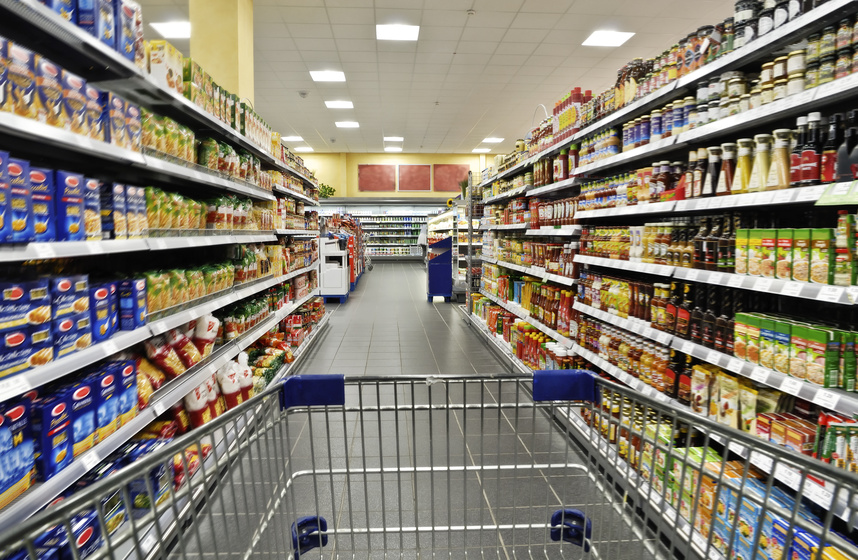Chain assortment optimization: how to avoid a mistake?
The assortment is one of the most important competitive advantages of the chain. If the store does not have the product that the client needs, then he will go to your competitors.
And here it is not so important that the store has a convenient location, it has a competent layout of goods, attractive prices, and friendly staff. These are just additional benefits that are not able to satisfy the main need of the client - to buy the desired product.

What is the optimal assortment?
The optimal assortment is the list of goods that covers the customers' needs, brings the desired profit to the chain, sells quickly, and does not "freeze" funds in stocks.
Today, in a crisis, assortment optimization is more important than ever for every retailer. It will allow:
✅ - Successfully compete with other retail chains.
✅ - Create constant customer traffic.
✅ - Turn random customers into regular customers.
✅ - Improve the reputation of the chain.
✅ - Minimize non-selling goods.
✅ - Avoid lost sales due to zero stocks or the absence of goods in the assortment matrix.
✅ - Competently plan the purchase and set up effective logistics.

How will assortment optimization affect your sales performance?
A competent assortment matrix will allow you to:
- increase chain sales up to20%;
- ensure the growth of spontaneous purchases of your customers by 40%;
- increase conversion up to 35%;
- contribute to the growth of the average check by 1.5 times;
- accelerate turnover ratio by 7-10%;
- get a larger profit.
Such results will allow the retailer to successfully meet all the challenges of the present time.

Mistakes are often made by retailers in assortment management
The experience of working with various retail chains has allowed us to compile a list of the most popular errors in the formation of product nomenclature:
❌ - They do not study the customers' needs and do not predict demand, but form an assortment matrix intuitively.
❌ - They are led by the persuasion and suggestions of suppliers, forgetting about the real needs of the store;
❌ - They make an assortment so wide or so narrow.
❌ - They do not take into account the seasonality of individual product items.
❌ - They forget about the features of the store: format, location, and target audience of buyers.
❌ - They do not follow the latest trends in the market.
❌ - They do not adjust the assortment for a long period, leaving it constant.
❌ - New SKUs are introduced, replacing SKU-bestsellers with them.

How to optimize the assortment?
Demand forecasting is the starting point for assortment planning. Because it is important to understand who your customers are and what they will need soon.
This process is not easy and requires taking into account many factors:
- changes in LFL turnover (Like for like);
- seasonality of goods;
- availability and effectiveness of promotions;
- inherent cross-effects: halo-effect and cannibalization;
- fluctuations in the penetration of categories, goods, and brands;
- demographic characteristics of the target audience of the store.
It is practically impossible to take into account all these factors manually, or the accuracy of such calculations will be extremely low. To solve such an extremely complex task, we recommend using analytical platforms based on artificial intelligence (AI) algorithms.
Advanced artificial intelligence methods make it possible to process a huge amount of data in a few minutes, track trends that are invisible to the human eye, and offer the best solutions among the many possible options.

Instead of thousands of indicators ...
We will not offer you indicators and approaches for analyzing customer behavior or forecasting demand. There are many of them, and the complexity of the application will require a lot of your precious time.
Our offer is a turnkey solution on an analytical platform for retailers!
The Datawiz team has collaborated with retail experts to create a special "Recommended Assortment" report. Using machine learning tools (ML), this report offers users ready-made solutions for assortment optimization.

With its help, you can:
- identify products that it is advisable to introduce into the assortment of certain stores;
- predict sales performance taking into account the recommended assortment renewal;
- increase the chain's profit by choosing the most effective assortment policy.
The report algorithm uses clustering of chain stores and deeply examines the available assortment for each cluster, its sales performance, and trends.
This clustering is based on:
1. Store concept: type, format. Artificial intelligence collects all the necessary information to understand which direction of development and method of service is chosen for the store. After all, the list of categories and products that should be placed on the shelves will depend on this.
2. Portrait of the target audience and its preferences. A huge amount of data is available for AI algorithms, which allows you to create a more accurate view of the chain's clients. Based on such information, the system will generate recommendations for assortment optimization. So, if the store is located in an area with many offices, the proposed goods will be products for healthy and satisfying snacks. In the case when the target audience of the store is married couples with children, the system will recommend top-selling goods for the daily preparation of meals and baby feeds.
3. Internal features of the store: the size of the trading area, the presence/absence of a warehouse, the type of equipment, the list of suppliers, and the conditions for cooperation with them. Such nuances have a direct impact on the formation of the optimal assortment matrix and are taken into account by artificial intelligence.
4. Competitive environment.This information is difficult to access, but AI algorithms can collect the necessary data from various external sources and Internet sites. Already knowing what competitors are selling, what prices with, and what their product assortment "gaps" are, the analytical system will generate offers to improve your product matrix of each store in the cluster.
With the help of such a report, you will receive daily recommendations for assortment optimization, track the reaction of customers to changes in product items, identify SKUs that will be in demand, and will bring additional income to stores.
It's time to outsource complex tasks to powerful AI systems!
We would like to end with a quote from Evan Sheehan, Deloitte Global Retail Leader: "Those retailers that can get consumers what they want, where they want it, and when they want it will be the ones that continue to win".

 Novedades
Novedades





 ¡No se necesita tarjeta bancaria!
¡No se necesita tarjeta bancaria!